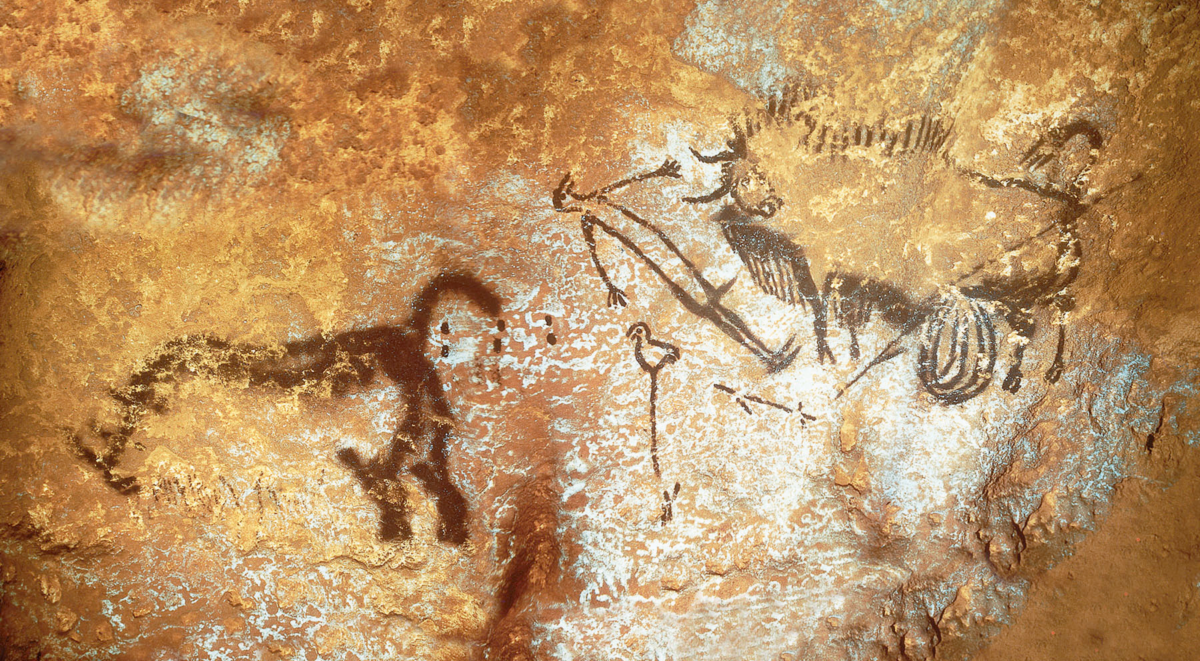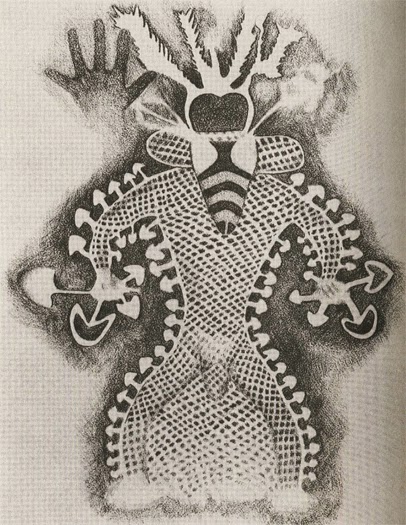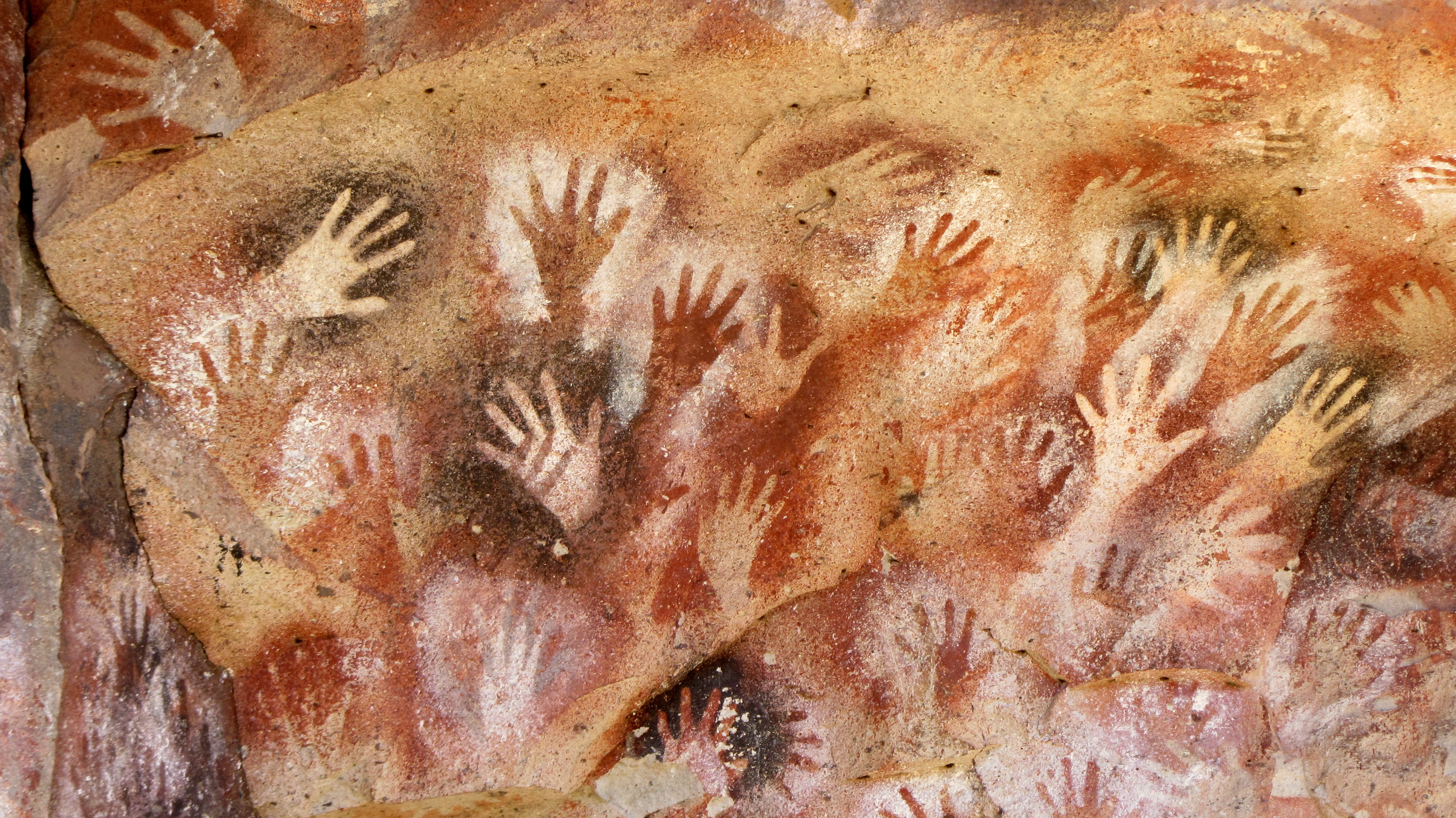Painting in caves thousands of years before the first civilization, human beings entered altered states that brought forth an awakening in our consciousness.
Archaeologists and anthropologist agree that cave paintings at ancient sites like Lascaux, Chauvet, and El Castillo were inspired by visions from shamans in altered states of consciousness. These images of part-human, part-animal therianthropes, along with motifs of criss-crosses, dotted patterns, and impalement, mimic the same archetypes later reported by test subjects while on LSD.

Erect Birdman, a therianthrope from Lascaux Cave
The shift from the alert, problem-solving consciousness that kept our early ancestors alive from predators and the elements to the abstract state of mind signified our evolution into thoughts of the divine.
Artificial Intelligence, if it can ever become truly conscience and not just a soulless, computational device, must take true hallucination into account if it ever wants to experience reality the way humans do. Our own evolution of consciousness, both spiritually and historically, is replete with tales of visions, dreams, and the supernatural.
Read More: AI and Spirituality: Toward the recreation of the mythical, soulless Golem
In his pursuit of getting to the bottom of the shamanistic approach to cave painting and altered states of consciousness, independent researcher and best-selling author Graham Hancock detailed in his book Supernatural: Meetings With the Ancient Teachers of Mankind, how he would not take an ivory tower, arm-chaired approach, but rather personally dive head-first into the psychedelic realm to uncover the truth.
“Encounters with supernatural beings are documented in the oldest representational art that has so far been found anywhere in the world — art depicting therianthropes and dating back more than 30,000 years. The discovery that shamans in surviving hunter-gatherer cultures routinely experience encounters with virtually identical beings when they enter trance, and that I could and did encounter such beings myself under the influence of the same hallucinogens that the shamans use, convinced me that there was a real mystery to explore here.”
https://www.youtube.com/watch?v=9dC7p_x9QiY
What researchers like Hancock, anthropologist Jeremy Narby, and the late psychonaut Terence McKenna tell us, is that our genetic makeup functions as a vessel for receiving altered states of consciousness. Under altered states of consciousness, we can encounter entities from other realms that can bring to us valuable information, both on a personal and global level.
Read More: UW research into DNA storage backs up ancient shamanic knowledge
So, what does this have to do with Artificial Intelligence?
If the goal is to make machines as human as possible, there must be an element of the supernatural — a Divine Spark if you will. For McKenna, Hancock, and Narby, that divine spark which brought forth an expanded consciousness in humanity was the discovery of altered states of consciousness, whether it be through plant or fungal entheogens, rhythmic dance, drumming, starvation, or purposeful intoxication through insect bites.
Read More: Terence McKenna’s cyberdelic evolution of consciousness as it relates to AI
In his book Beyond Zero and One: Machines, Psychedelics, and Consciousness, scientist and engineer Andrew Smart raises the question “how smart can machines get without being conscious?” He believes that “the issue of consciousness invariably raises the issue of LSD and hallucinations.”
Smart also stated that “human perception and consciousness often hide the true complexity of the world.” The author illustrates the difference between how cameras in intelligent machines do not “see” things the same way humans do.
Here’s an example. Before reading further, watch this video while keeping a silent count of the number of passes made by the people in white shirts.
Did you see the gorilla?
This was a Harvard experiment dubbed the Invisible Gorilla, and the study concluded that half the people who watched the above video did not notice the gorilla, despite its nine second presence on-screen.
The gorilla was physically there and captured on camera, so it should be detected by us, right? What the camera sees in plain sight, the human mind may not, and that is one example of the conscious differences between human beings and computers.
The gorilla was a blind spot created in the brain that did not allow the human to “perceive” it, and this blind spot can also be construed as a hallucination. For what is a hallucination if not a mind-construction that allows you to see things that you normally would not, or not see things that you normally would?
Commenting on the influence of psychedelics in the tech community, of which Steve Jobs was a big proponent, Smart asks, “What if Silicon Valley got back to its psychedelic roots? Only this time, instead of company founders and spiritually inclined engineers dropping acid, Silicon Valley would try to figure out how to give LSD to conscious machines.”
Read More: Terence McKenna’s ‘cyberdelic’ predictions for Virtual Reality 25 years on
Smart concludes in his book, “I do not believe it would be crazy to begin to try to design computers with the purpose of giving them psychedelic experiences. Along the way, we might finally crack the mystery of human and machine consciousness and in the process save the human race.”
Unlike Elon Musk’s latest endeavor to create AI-human cyborgs, Smart isn’t sure if this is the right path for humanity.
However, an AI-human hybrid does get a lot more interesting if you consider a neural-laced human brain infused with AI nanobots that is tripping on acid, psilocybin mushrooms, DMT, or some other psychedelic. Digital entheogens, anyone?
Read More: AI human cyborgs are next on Elon Musk’s agenda with the launch of Neuralink

Artist Katt McKenna’s rendition of the ancient bee-faced mushroom shaman of Tassili Niger, Algeria.
What connections could be made if human consciousness, fused with AI, could have a psychedelic experience? What brave new horizons could be forged? What doors of perception could be opened?
It wasn’t until humans began having hallucinations in the caves of our prehistoric past that we developed a sense of the divine, which later led to spirituality and religion, and a higher consciousness.
Perhaps the deep mind in the cave will emerge once machines (or hybrids) are able to have full-blown psychedelic experiences.












